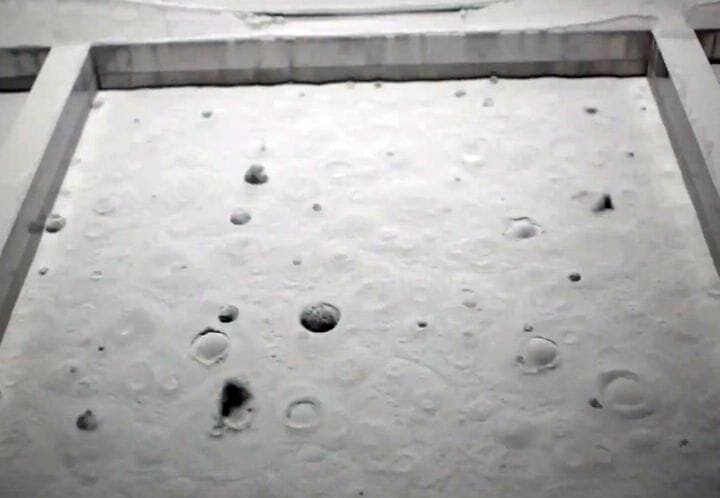![A very bubbly metal powder bed [Source: YouTube]](https://fabbaloo.com/wp-content/uploads/2020/05/image-asset_img_5eb08c6e08def.jpg)
I found another interesting approach to solving a quality problem when 3D printing metals with powder bed fusion processes.
The problem is that as a metal 3D print job proceeds a small amount of oxygen is generated within the build chamber as the powerful laser hits water molecules and releases oxygen. That oxygen tends to react with metals, making the resulting prints of poor quality – both on the surface and in strength.
Metal 3D Print Oxygen Problem
Oxygen is usually purged from the build chamber by forcing in an inert gas such as nitrogen or argon, displacing normal air containing oxygen. However, deep in the powder bed reservoir there may be air molecules trapped by the thick and fine powder.
As the metal print job proceeds, the released oxygen accumulates and eventually can reach levels that corrupt the print, and in some cases can even corrupt the remaining metal powder in the build chamber. In the worst cases this powder must be discarded, and that’s an expensive proposition with some materials costing US$500/kg.
One solution I saw recently was an apparatus from Linde that monitors oxygen levels during 3D printing and if necessary, can re-purge the build chamber during printing to maintain lower oxygen levels.
Metal 3D Printing Vacuum Concept
Today I’m reading a piece by Deelip Menezes of 3D Systems that describes another approach I had not realized: vacuum flushing.
While most metal 3D printers “push” out the oxygen through replacement of the chamber atmosphere, it turns out that 3D Systems’ DMP metal 3D printers uses a different approach.
Before introducing the inert gas, the machines suck out all the air in the build chamber, creating a vacuum. This step truly does remove ALL the air, including the molecules trapped within the powder reservoir. Don’t believe me? Watch this video that shows how the air literally bubbles out of the powder bed:
Note that in non-vacuum systems, this bubbling does not occur, and so one wonders how much air remains trapped in the powder.
3D Systems repeats the vacuum cycle three times, which ensures there is virtually no air left in the build chamber, before they introduce the inert gas and begin 3D printing. Menzies says he’s often seen oxygen levels as low as 5ppm, which is about as close to zero as you could hope to get.
3D Print Oxygen Contamination
My previous post on this topic was entitled the “Dirty secret of metal 3D printing”, and this effect is something that the metal 3D printer manufacturers somehow don’t always manage to tell you. It’s something that is often discovered unexpectedly when operating the device.
It’s these issues that could be holding back 3D printing from deepening its usage in industry. If a manufacturer has a bad experience, they are unlikely to make further use of the technology. And if they’re networking with other companies, word can spread.
This is simply not a good way to proceed for the industry. Instead, let’s fix these problems as 3D Systems and Linde have done and get production going.
Via Deelip

